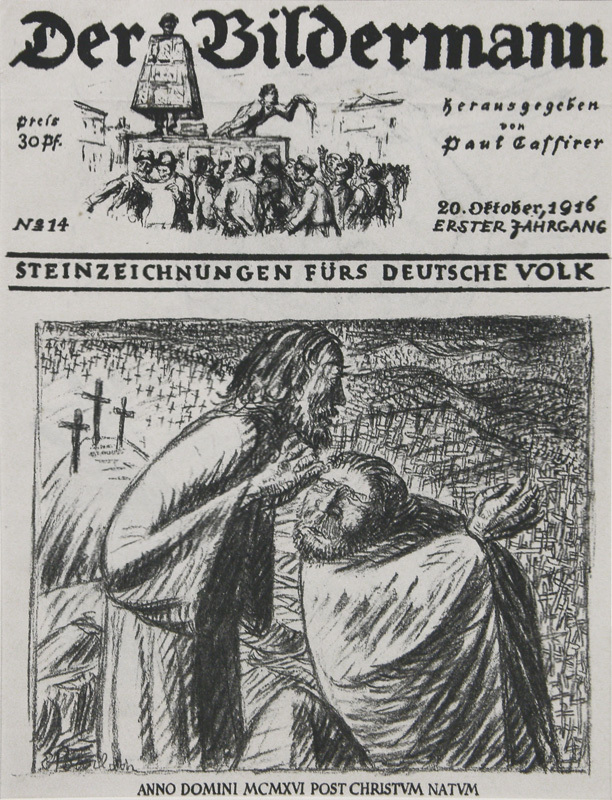
19th, 20th & 21st Century Fine Prints
707-546-7352 · fax 707-546-7924 · web: www.annexgalleries.com · email: artannex@aol.com
Anno Domini MCMXVI Post Christum Natum by Ernst Barlach

Anno Domini MCMXVI Post Christum Natum
Ernst Barlach
Anno Domini MCMXVI Post Christum Natum
Ernst Barlach
1870 - 1938 (biography)'Der Bildermann' was a German art periodical publishedin the early 20th century. The actual edition is unknown (approx. 1000-2000). There was deluxe edition of 75 on "Van Gelder Zonen Bütten" paper; a single print, hand-printed on the Pan-press: an unknown number on Japan paper, before the periodical edition; 50 on "Bütten" paper, after the periodical edition.
In 1916, reflecting the increasing weariness with World War I in Germany, Paul Cassirer Verlag replaced the hawkish periodical 'Kriegszeit' with 'Der Bildermann', a new publication whose goal was "to bring a broad public directly in touch with art." 'Der Bildermann' featured original lithographs that addressed a range of subjects, not just the war, as an answer to the growing call for beauty as the conflict dragged on. Leo Kestenberg, a pianist and pacifist, ran the journal while Cassirer served in the army. The artist Max Slevogt suggested the periodical's title, which means "the picture man," and designed the vignette on the masthead, which shows a man peddling broadsheets to eager soldiers and civilians of all ages and stations.
'Der Bildermann' balanced a preponderance of allegorical animal scenes by August Gaul with edgier Expressionist works by former Brücke artists—Ernst Ludwig Kirchner, Erich Heckel, and Otto Mueller—and monumental images of Death by Ernst Barlach. Oskar Kokoschka, who had been severely injured on the Eastern Front, contributed six prints on the Passion of Christ, focusing on the human capacity to inflict suffering. The publication also featured socially critical print series by Slevogt and Ottomar Starke.
Dwindling subscriptions, coupled with increasing difficulties with censors and the bureaucracy, led Cassirer to cease publication of Der Bildermann after only eighteen issues.


